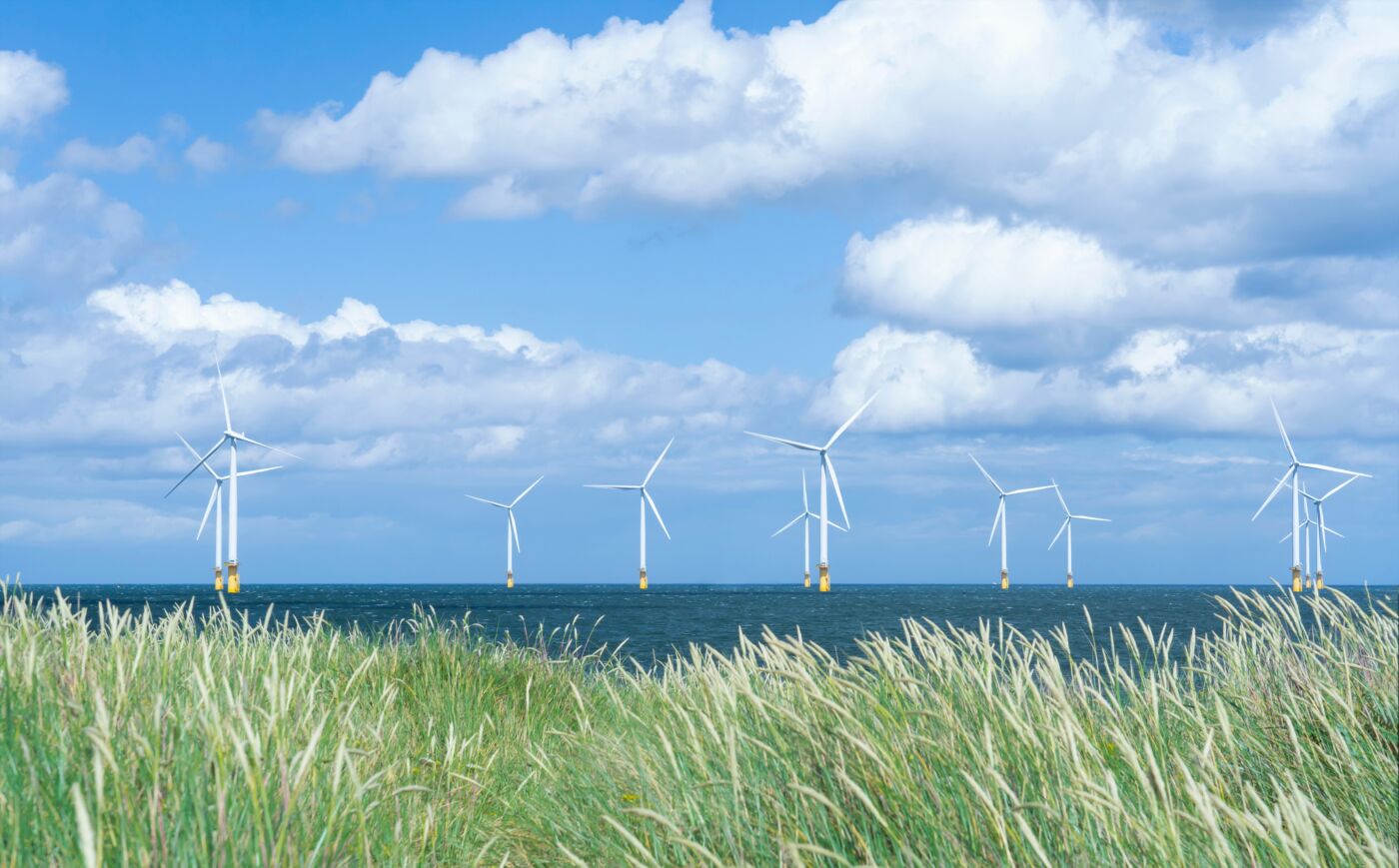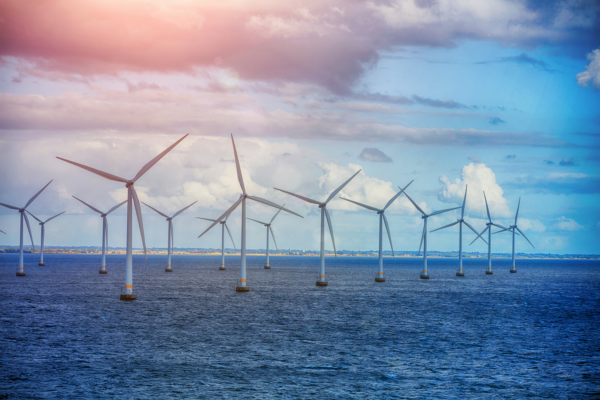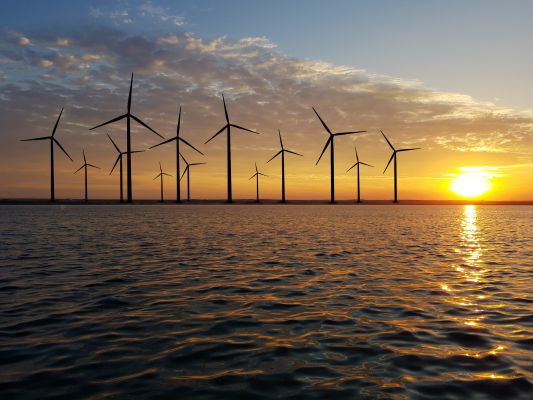Strong winds at sea help drive turbines and ensure the efficiency of offshore wind farms. However, sea winds carry one small disadvantage: they are only ever found near the coast and their foundations must not be deeper than 35 kilometers (km) below sea level. Floating wind farms do not have this problem. They can be built wherever conditions are optimal which, according to Musial, is usually in waters deeper than 60 meters (m).
Hywind’s hy-output
A little over three years ago, the first ever floating offshore wind farm opened 29 kilometers off Petershead. Hywind Scotland, as it is called, has five wind turbines generating a total of 30 megawatts (MW) of power each, combining to permanently supply 36,000 households with electricity. Since then, the Scottish project has served as a model for others. Floating turbines are still rather expensive, but this disadvantage is eradicated as more plants are built. Any investment would certainly pay off in the long run.
In the meantime, we have drawn up a short list of some other floating wind farms from around the world.
WindFloat, Portugal
A third turbine was recently installed at the WindFloat farm, about 20 km off the Portuguese coast. With a total output of 25 MW, the wind farm can supply around 60,000 households with electricity – which means it has the highest output of any floating wind farm. It is operated by the Windplus consortium.
Hywind Tampen, Norway
Hywind Scotland proved a huge success – so the project continues, this time off the coast off Norway. This floating wind farm currently being built is set to supply electricity to power oil and gas plants. With a total capacity of 88 MW, the facility is expected to meet 35 percent of the annual electricity needs of the Snorre and Gullfaks oil and gas platforms. The wind farm is scheduled for completion in 2022.
Ideol, France
Erected in fall 2018, the 62-meter-high wind turbine, Floatgen, sits off the French Atlantic coast. It stands on a patented square body of which its outermost edges are made of concrete. Inside the concrete body is damping pool which helps to minimize sway in strong winds. Last year, the 2 MW turbine produced significantly more electricity than expected. For this reason, similar wind farms are set to be built in the Mediterranean.
Nezzy², Germany/China
Like Floatgen, Nezzy² has a unique design. Its two wind turbines are angled at 45° against the water on an anchored platform. During initial testing in the Baltic Sea, the prototype survived a storm surge unscathed. At the end of 2021, the full-size double wind turbine will be erected and tested off the coast of China. EnBW and Aerodyn Engineering are responsible for the project.
New impetus for wind power!
According to the Global Offshore Wind Report, floating wind turbines could generate a combined 6.2 GW of electricity worldwide as early as the end of this decade – and even replace conventional offshore wind farms in the long term. Watch this space!



